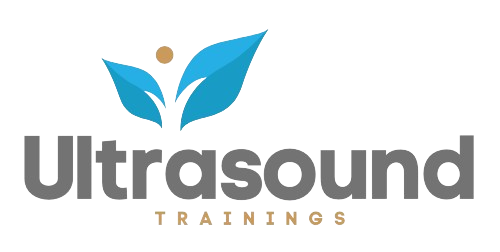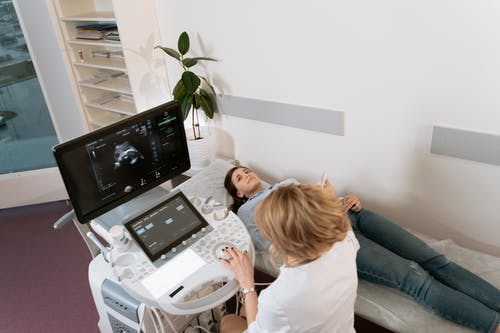Pain management is a critical aspect of healthcare, especially for patients suffering from chronic pain, musculoskeletal injuries, or post-surgical discomfort. One of the most effective ways to manage pain is through targeted injections or procedures that deliver medication directly to the source of pain. Traditionally, these procedures relied on a clinician’s ability to locate the pain site based on physical examination or anatomical landmarks, which often led to uncertainty or errors.
In recent years, however, ultrasound technology has revolutionized the way healthcare professionals perform pain management procedures. Ultrasound imaging offers real-time visualization of soft tissues, nerves, and structures, enabling clinicians to guide injections and other treatments with greater precision, efficiency, and safety.
In this blog post, we will explore how ultrasound is used in pain management, focusing on its role in guiding injections and procedures. Whether you’re a healthcare professional considering ultrasound training or a patient curious about this innovative approach, this guide will provide valuable insights into the benefits and applications of ultrasound in pain management.
What is Ultrasound-Guided Pain Management?
Ultrasound-guided pain management refers to the use of ultrasound imaging to visualize the area of interest in real-time during a procedure. By providing dynamic, high-resolution images, ultrasound allows clinicians to precisely locate nerves, blood vessels, joints, or other structures, guiding them as they administer injections, perform nerve blocks, or carry out other pain management techniques.
The key advantage of using ultrasound in pain management procedures is its ability to ensure accuracy and minimize complications. It enhances the clinician’s ability to target specific pain sites, which is especially important for patients with complex or deep-seated pain, as well as for those who require repeated treatments over time.
Common Pain Management Procedures Using Ultrasound
Ultrasound is used in various pain management treatments to guide injections and other procedures. Some of the most common procedures include:
1. Nerve Blocks
Nerve blocks are commonly used to treat pain from conditions such as sciatica, arthritis, and post-surgical pain. During a nerve block, an anesthetic or steroid is injected near a nerve to temporarily block pain signals.
How Ultrasound Helps:
- Ultrasound enables clinicians to visualize the exact location of nerves and blood vessels, helping them to inject the anesthetic or steroid precisely around the nerve.
- It reduces the risk of hitting unintended structures and increases the likelihood of the block providing effective pain relief.
2. Joint Injections
Joint injections are often used to relieve pain caused by conditions like osteoarthritis, rheumatoid arthritis, or tendonitis. Corticosteroids or other medications are injected into the joint space to reduce inflammation and alleviate pain.
How Ultrasound Helps:
- Ultrasound allows clinicians to guide the needle directly into the joint space, ensuring accurate placement of the medication.
- It also helps in visualizing synovial fluid, cysts, or inflammation, providing better treatment outcomes for patients.
3. Epidural Injections
Epidural injections are commonly used to treat lower back pain, especially for conditions such as herniated discs or spinal stenosis. The procedure involves injecting corticosteroids or local anesthetics into the epidural space of the spine to relieve pain and inflammation.
How Ultrasound Helps:
- Ultrasound allows for real-time guidance, improving the accuracy of needle placement into the epidural space, reducing complications such as dural puncture or incorrect needle placement.
- It offers a less invasive alternative to fluoroscopy, reducing patient exposure to radiation.
4. Tendon and Bursae Injections
Tendonitis and bursitis are common causes of musculoskeletal pain. In these conditions, injections of corticosteroids or hyaluronic acid can help reduce inflammation and promote healing.
How Ultrasound Helps:
- Ultrasound helps visualize the affected tendon or bursa, allowing the clinician to target the injection precisely.
- It also helps monitor the spread of the injected medication, ensuring it reaches the intended area.
5. Peripheral Nerve Stimulation
Peripheral nerve stimulation (PNS) involves the implantation of a small device near a peripheral nerve to provide continuous pain relief. The device sends electrical impulses to the nerve, blocking pain signals.
How Ultrasound Helps:
- Ultrasound is used to guide the placement of the stimulation lead, ensuring it is positioned correctly to provide effective pain relief.
- It allows for non-invasive visualization during the procedure, reducing the risk of complications.
Benefits of Ultrasound in Pain Management
1. Precision and Accuracy
One of the biggest advantages of using ultrasound in pain management is its ability to guide procedures with exceptional precision. Clinicians can see the exact location of nerves, blood vessels, muscles, tendons, and other structures, ensuring that injections and procedures are administered to the correct area. This leads to higher success rates and better outcomes for patients.
2. Real-Time Imaging
Ultrasound provides real-time, dynamic imaging, which is essential for guiding pain management procedures. Unlike X-rays or CT scans, which provide static images, ultrasound allows the clinician to view structures in motion, such as the movement of a needle or the spread of injected medication. This ability to monitor the procedure in real time enhances the accuracy of the treatment and helps avoid complications.
3. Reduced Risk of Complications
By providing clear visualization of anatomical structures, ultrasound reduces the risk of hitting unintended areas during injections. For example, it helps avoid blood vessels and organs, reducing the risk of bleeding or puncturing a vital structure. This reduces the overall risk of complications compared to blind injections or procedures based solely on palpation or anatomical landmarks.
4. Minimally Invasive and Non-Radiation-Based
Ultrasound is a non-invasive imaging technique that does not require radiation. Unlike procedures that rely on fluoroscopy or CT scans, ultrasound eliminates the need for exposing patients to potentially harmful radiation. This makes ultrasound-guided procedures safer for both patients and healthcare providers, especially for those who need repeated treatments.
5. Faster Recovery and Better Patient Comfort
Because ultrasound-guided procedures are more precise, they typically result in less tissue damage, less discomfort, and a faster recovery time for patients. Additionally, ultrasound allows for smaller needle sizes, further enhancing patient comfort during the procedure. These factors contribute to improved overall patient satisfaction.
Training and Skills Required for Ultrasound in Pain Management
For healthcare professionals who wish to incorporate ultrasound into their pain management practices, proper training is essential. Ultrasound-guided injections and procedures require not only knowledge of ultrasound technology but also an understanding of human anatomy and the specific techniques for performing these procedures.
Key training components include:
- Ultrasound Basics: Understanding the fundamentals of ultrasound technology, including machine settings, probe selection, and image interpretation.
- Anatomy and Pathology: Developing a strong knowledge of the anatomy of the musculoskeletal system, nervous system, and other structures relevant to pain management.
- Needle Guidance: Learning how to use ultrasound to guide a needle accurately, ensuring that injections and other procedures are performed with precision.
- Patient Safety: Understanding how to minimize risks and complications during ultrasound-guided procedures.
Healthcare providers such as pain management specialists, orthopedic surgeons, anesthesiologists, and physical therapists are increasingly seeking ultrasound training to improve their ability to guide pain management treatments. For those interested, training programs often include both didactic and hands-on learning, with opportunities to practice on live models or simulators.
Conclusion: Enhancing Pain Management with Ultrasound
Ultrasound technology has transformed pain management by offering clinicians the ability to perform procedures with greater accuracy and safety. By guiding injections and other interventions in real time, ultrasound enhances the effectiveness of pain management treatments, reduces the risk of complications, and improves patient outcomes.
For healthcare professionals, ultrasound is an invaluable tool that can elevate the quality of care provided to patients with chronic pain or musculoskeletal injuries. As ultrasound technology continues to evolve, its applications in pain management will only expand, further solidifying its role as a key diagnostic and treatment tool.
If you’re interested in incorporating ultrasound into your pain management practice or expanding your skill set, Ultrasound Trainings offers comprehensive ultrasound training programs. Our courses equip healthcare professionals with the knowledge and hands-on experience needed to confidently perform ultrasound-guided procedures. Contact us today to learn more and take the next step in enhancing your career!


